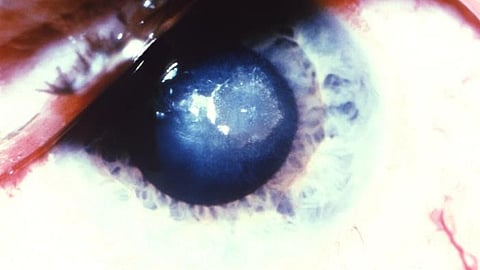

Do you have questions about treatment of age-related macular degeneration, otherwise known as dry AMD? Anjali Shah, MD, ophthalmologist at Michigan Medicine, has answers.
Here are six things you and your family should know about treating the condition:
The medication is called pegcetacoplan, or Syfovre, and it was recently approved by the Food and Drug Administration. It has been shown to slow the progression of a severe form of dry AMD called geographic atrophy. It is not approved for other types of dry AMD.
It's important to note that the drug does not reverse or stop progression, but it may delay further vision loss. Based on clinical trials, we estimate that the drug slows the rate of progression by 1-3 months each year. In other words, if the disease was going to progress to a certain stage of severity in 24 months, it would take 27-30 months while on the drug.
This dry AMD medication needs to be injected into the eye between every 4 and 8 weeks, which requires a doctor's visit each time.
It's unclear how long patients need to be on the medication and it's likely that the duration of treatment will be different for every person, but most people will need to continue treatment for several years. There are currently no drops or pills to treat dry AMD.
The clinical trials suggest that there's about a 10% risk of developing wet macular degeneration in the first year of treatment with Syfovre. Wet macular degeneration can be treated, but it would require different injections in the eye.
In addition, there are always risks to receiving injections of any type of medication in the eye. The biggest risk is getting an infection in the eye, which can cause permanent vision loss. This happens about 1 in every 3,000 injections.
Though anyone with geographic atrophy can get the injection, it may only be an ideal treatment for a select group of patients. If the advanced dry AMD is threatening high-resolution central vision, it may have a benefit that increases over time. In the clinical trials, there was no improvement in vision in 1 to 2 years. You should talk to your doctor to find out if this treatment would be appropriate for you.
In the clinical trials, there was no improvement in vision in the first two years after starting treatment. The studies suggest that there may be some visual benefit over time, but there is currently no data to confirm that.
If you have any questions about dry AMD or its treatment, it's best to contact a retina doctor. They can provide you with personalized information and advice. (PB/Newswise)
